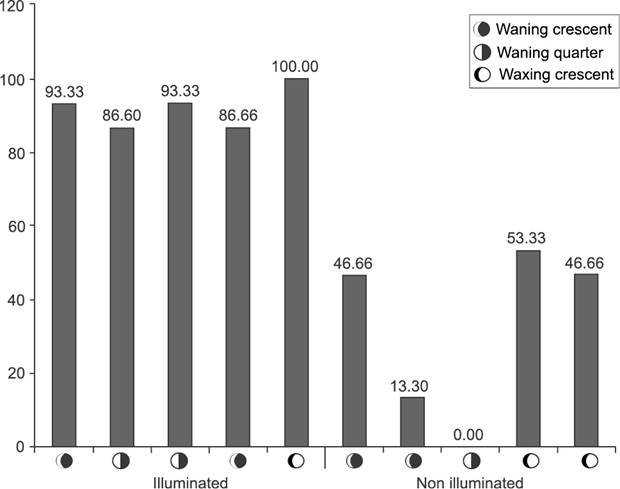ABSTRACT
Sea turtle hatchlings, in natural abiotic conditions, emerge from their nests at night and go directly to the sea, following the moonlight’s reflection in the ocean. Increased human activities such as tourism and artificial lights on the coasts, however, have interfered with the ability of sea turtle neonates to find their correct destination, negatively affecting their survival rates. Here we endeavored to assess the influence of artificial lights on the hatchlings of the sea turtle Eretmochelys imbricata (Linnaeus, 1766) in the south coast of the state of Pernambuco, Brazil. To that end, 10 experiments were conducted with 15 hatchlings/test subjects. Five experiments took place in artificially illuminated areas and five in non-illuminated areas. Circles with a 2 m radius were drawn on the sand a small 2-3 cm depression was made at the center of each circles. The neonates were then placed in the depressions to simulate their coming from a nest. After the neonates crossed the edge of the circles, their tracks were photographed and drawn on a diagram. To ascertain if the trajectories of the neonates differed between the two groups (hatchlings from illuminated versus non-illuminated nests), the Rayleigh test was used. The significance of those differences was tested using ANOVA. To evaluate similarities and significance of clusters, a Multi-Dimensional Scaling was used. The tracks of 86.67% (N = 65) of the hatchlings from nests at illuminated areas departed from their correct trajectory. The distribution of trajectories was considered random (V = 19.4895, p > 0.05) only for tracks originating from artificially illuminated areas. The movement patterns of hatchlings from illuminated and non-illuminated areas differed significantly (F < 0.0001, p < 0.01). Consistent with this, two distinct groups were identified, one from illuminated and one from non-illuminated areas. Therefore, we conclude that artificial illumination impacts the orientation of hawksbill hatchlings. This suggests that in order to protect this species it is necessary to safeguard its nesting areas from artificial lights.
KEY WORDS:
Anthropogenic impacts; cheloniidae; conservation; hawksbill turtle; light pollution

 Thumbnail
Thumbnail
 Thumbnail
Thumbnail
 Thumbnail
Thumbnail


